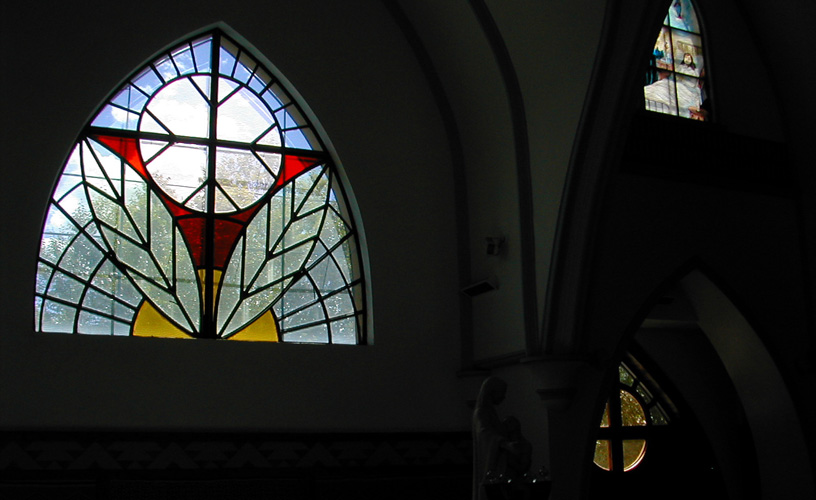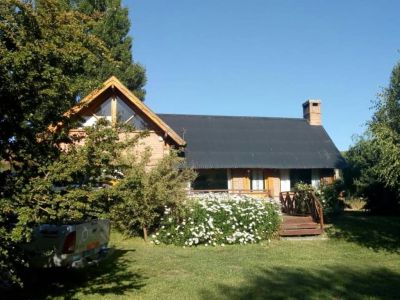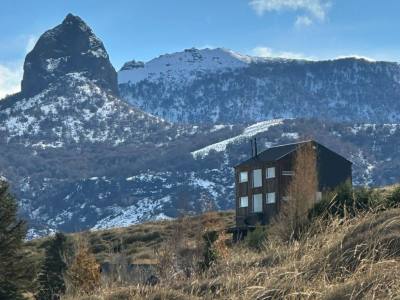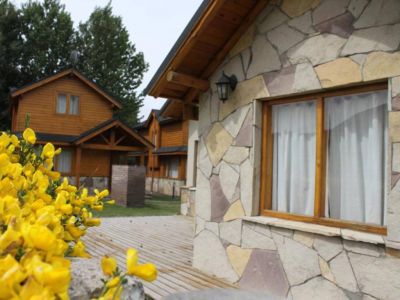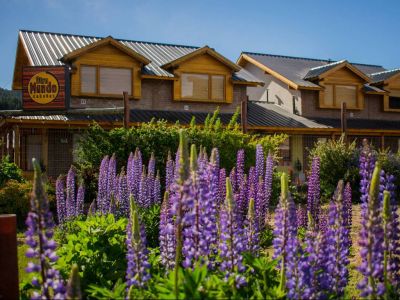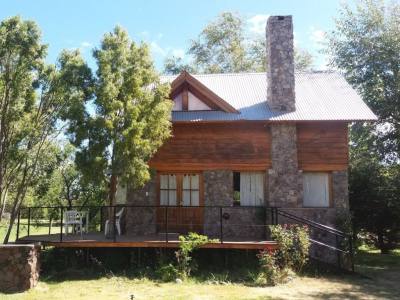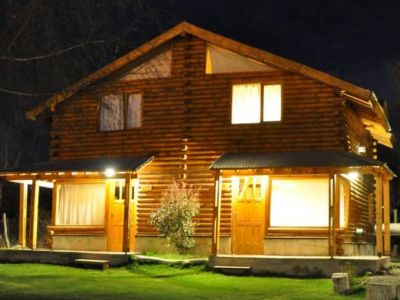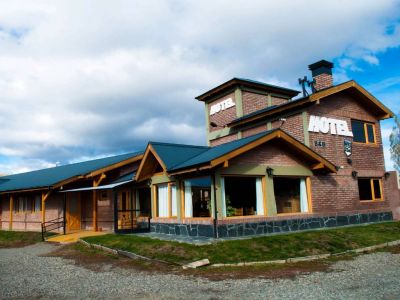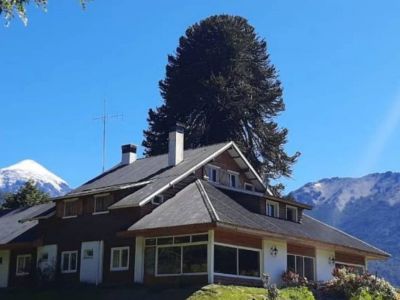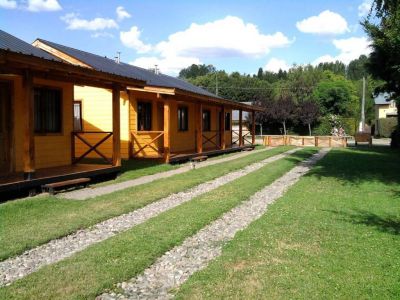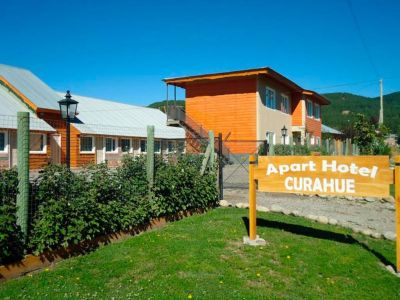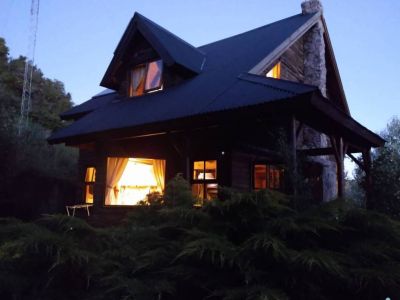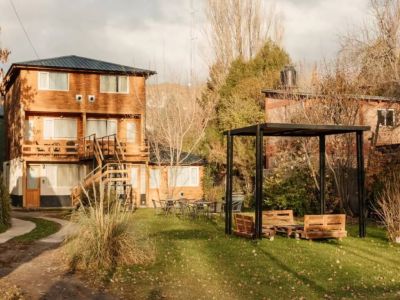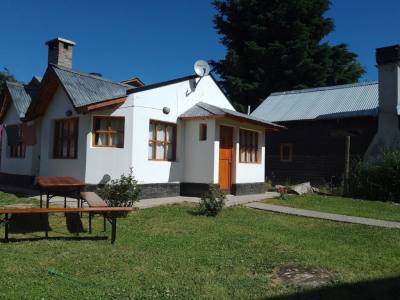In a construction of modern and austere lines, the sanctuary of Our Lady of the Snow is a space for prayer but also for reflection. The illumination and the images have a special meaning that is deciphered during the visit. We accessed the inside of the venue. The arched vault is inspired in Gothic art and the Latin cross plant leads to the main altar, a big circle that may be bordered. Four rocks brought from Lake Huechulafquen support the altar and the tabernacle, and represent the religious rites and beliefs of all the cultures. Accompanied by a guide from the church itself, we walked along the central aisle and gave a first look to the looms featuring Mapuche patterns on the sides. They explained to us that they were woven by the local craftswomen with wool tinged with natural products. The visit becomes more than interesting when the guide speaks: "A twelve-point sun makes reference to the twelve tribes of Israel and the Apostles, as well as to the way the year is divided into twelve lunar cycles. Water is the symbol of life and along with the lit Easter altar candle, they preside the altar as the elements of creation. In turn, the figure of Christ has Mapuche traits and clothes”.
Our Lady of the Snow
The chamber is very sober and invites visitors to pray in silence. On one corner, a bass relief made by sculptor Emilio Saracco -from Neuquén- commemorates the late Salesian priest Domingo Milanesio, much loved by the local denizens.
Homage is paid to an emblematic inhabitant of Junín de los Andes: blessed Laura Vicuña, who passed away in 1904 at the age of 13 after a cruel disease. She had arrived in the town when she was very young in the company of her mother. They came from Chile and lived at estancia Fosbery, the post of Manuel Mora close to the Quilquihue River and later on in a very poor house in Junín de los Andes. Laura attended María Auxiliadora School. Her remains were buried at Cerro de la Cruz, first cemetery in town.
After her passing, her short but exemplary life awakened faith in Catholic believers and it is said that some miracles happened in her name. The most famous one was nun Ofelia Lobos Arellano's, at Instituto María Auxiliadora. She had a very serious illness and the doctors claimed she had a few months to live. She begged little Laura to intercede before God to heal her. Her recovery was immediate and she continued to serve the Lord and her religious community.
At the sanctuary, the image of Virgin Mary embraces blessed Laura who, wearing a poncho, opens her hands to shelter the whole world. The Virgin has Mapuche traits and clothes and Laura appears just as what she was: a criollo child.
Pablo Etchevers
Santiago Gaudio



